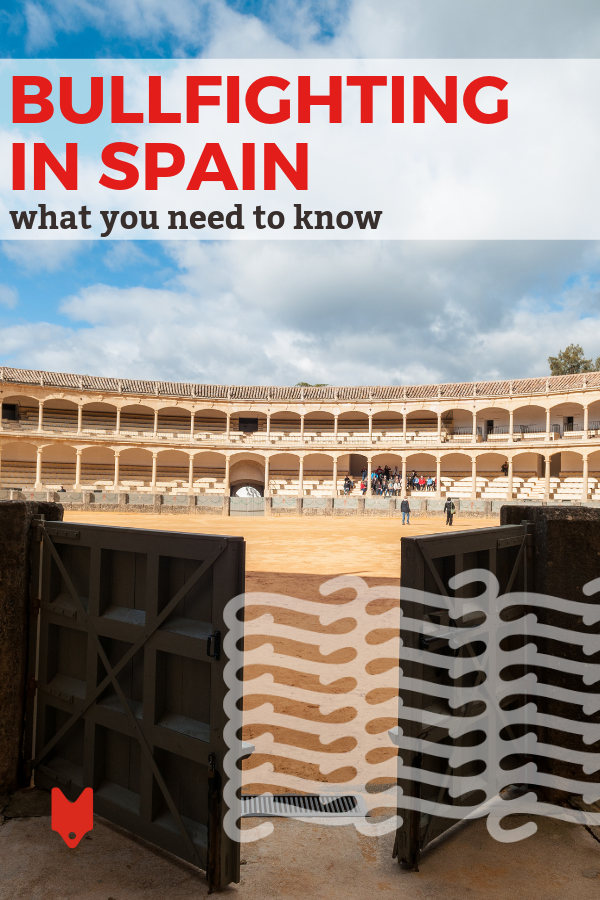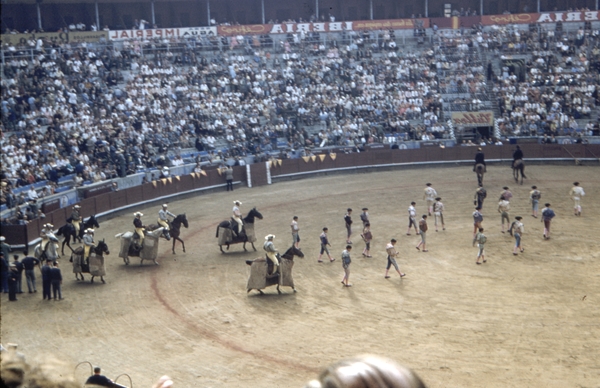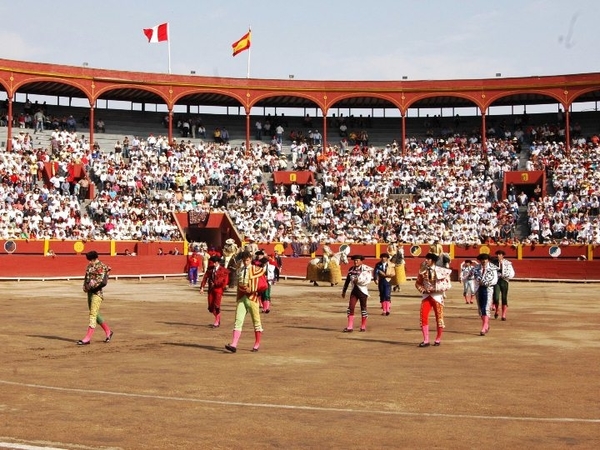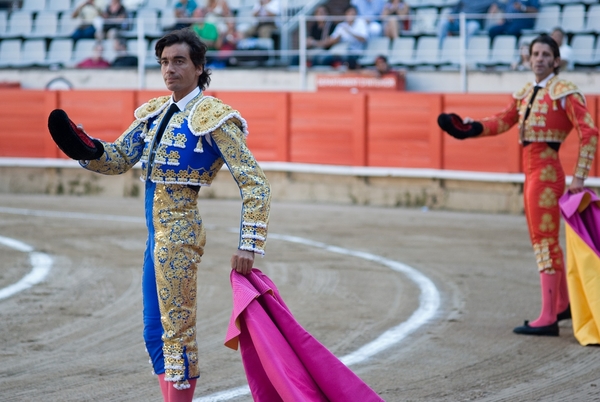It may seem like attending a bullfight is one of most authentically “Spanish” experiences you can have.
After all, it’s a spectacle that has been historically linked to Spain for hundreds of years. And starting in the 20th century, when literary icons from Ernest Hemingway to Federico García Lorca began depicting it in their works, the belief that Spain is a nation of tauromaquia—bullfighting mania—only strengthened.
But what if we told you that bullfighting is no longer in its heyday here in Spain? Sure, bullrings get packed with curious tourists and eager spectators, but the vast majority of Spaniards won’t be among them—in fact, fewer than 10 percent of Spanish people attended a bullfight in 2015.
If you’re curious about bullfighting in Madrid, or anywhere else in Spain, it’s important to make an informed decision—and we’re not just talking about whether to sit in the sun or the shade. Making an effort to learn about the history and context of this controversial sport is part of being a responsible traveler, and if you’re not sure where to start, we’re here to help.

Photo Credit: Anna & Michal, Text Overlay: Devour Madrid Food Tours
The history of bullfighting
Though today it holds clear ties with Spain, primitive forms of bullfighting were practiced throughout Mediterranean cultures in ancient times, and the sport flourished across the region. Men fought and killed bulls in Ancient Greece and (especially) Rome, and one possible theory credits the Roman emperor Claudius with bringing the sport to the Iberian Peninsula as a substitute for gladiator battles.
Bullfighting enjoyed immense popularity in the Middle Ages, when it was seen as a noblemen’s sport enjoyed by the likes of Charlemagne and King Alfonso X. Instead of gathering to watch knights joust, as was common in other parts of Europe at the time, the high society of medieval Spain relished in watching a single fighter on horseback, armed only with a lance, take on the mighty bull (toro).
Ronda native Francisco Romero is generally credited with developing the modern style of bullfighting in the 18th century, opting to fight the bull on foot rather than on horseback. 200 years later, Juan Belmonte continued to revolutionize the sport with his death-defying technique of remaining within a few inches of the bull at all times.
But just as bullfighting doesn’t have its roots in Spain, it’s practiced beyond Spanish borders even today. Here in Europe, it’s also found in Portugal and some parts of southern France. And as a result of Spanish colonization, it’s not uncommon to see bullfights in some Latin American countries such as Mexico, Ecuador and Peru.
Even within Spain, though, bullfighting is not completely legal in all regions. The autonomous communities of Catalonia and the Canary Islands have banned the sport completely, while it remains heavily regulated in the Balearic Islands, where the killing of the bull in the ring is prohibited.

What to expect at a bullfight
The short version: at a typical fight in Spain, three bullfighters, or toreros (the term matador is understood in Spain, but less commonly used) perform. Each torero will fight and kill two bulls, to add up to a total of six fights. If you’d prefer not to know specifics, feel free to scroll past the next few paragraphs.
The long version: the event starts with a paseíllo, or parade, in which the participating toreros and their teams enter the arena. The toreros themselves, dressed in the traditional traje de luces (literally, “suit of lights” due to the sequins and golden embroidery), tend to come in on foot, but some of the other participants (more on them in a bit) will ride on horseback.
After the paseíllo, it’s time for the six fights to begin. Toreros fight in order of seniority, so the most senior torero fights the first and fourth bulls, the second-most senior fights the second and fifth, and the least senior fights the third and sixth.
Each individual fight consists of three stages, and lasts for a total of around 20 minutes. The whole event made up of six bullfights lasts around two hours.
Here are the three stages that make up each fight:
1. Tercio de varas
The bull enters the arena. The spectacle is quiet for the first few minutes as the torero and their teammates assess the animal’s behavior and attitude. When they’ve gotten an idea of what to expect, the torero waves a cape (capote) and the bull begins to charge. At this point, two picadores, or horsemen, enter the arena, each armed with a lance. They come with the goal of driving the weapon into the bull’s shoulder muscles in order to weaken it. After each stab, the torero continues to provoke the bull to charge by waving the capote.
2. Tercio de banderillas
The picadores leave the arena to be replaced by two banderilleros, or lancemen. Each is armed with a pair of banderillas, or small spikes covered with colorful strips of paper, which serve to both distract and further injure the bull. The banderilleros taunt the bull with their weapons, and when it gets close enough, they drive the banderillas into the animal’s shoulders. The torero usually does not participate as fully in this stage, often opting to observe from the sidelines.
3. Tercio de muerte
Alone in the ring, the torero faces the bull one-on-one, this time wielding a smaller red cape known as a muleta. After getting the bull riled up with a series of muleta-waving passes known as tandas, the torero swaps out a ceremonial sword with the killing one.
The fatal blow needs to be very strategically delivered, usually by approaching from between the horns and driving the sword down through the bull’s shoulders into the aorta. This is both to prevent goring and to establish the bull and the torero as “clean, masterful fighters” in the eyes of the audience.
After the ring is cleared by a team of mules dragging the dead bull out of the arena, the next-senior torero takes a turn, and the whole event begins again with the tercio de varas.

It’s worth emphasizing that if you go to a bullfight, you will see six bulls killed. This is something that many tourists are unaware of before familiarizing themselves with bullfighting.
Still wondering what it’s like to attend a bullfight? Don’t just take it from us—in the video below, several tourists from around the world compare their expectations to reality after watching bullfighting in Madrid.
A controversial spectacle
Save for a minority of tauromaquia aficionados, most of us who live in Spain don’t consider bullfighting a part of our everyday lives. But due to its prevalence in literature and media, many visitors consider it an essential Spanish experience, when the truth is that Madrid—and Spain as a whole—has so much more to offer.
“There’s the issue of people coming to Madrid looking for an idea of the ‘authentic Spain’—flamenco, bullfighting and paella—which doesn’t match up with my vision of the city,” says Devour Madrid guide Ewan Bleiman. “My Madrid is a fun, anything-goes, chaotic, artsy city.”
The argument that bullfighting is animal cruelty (defined by Wikipedia as “the infliction… by humans of suffering or harm upon any non-human”) is the most common one against it.
“People wave it off as an important tradition,” agrees Devour Barcelona guide Fintan Kerr. “Traditions can be beautiful and often go some way to define the differences between us, but they can also be emotional and cultural baggage. Bullfighting, or ‘bull-killing’ as is more apt, is the latter, as far as I can see. I don’t see that it has any place in a modern, civilized society.”
Defenders of bullfighting have said that the relatively luxurious life of the bulls before their day in the ring makes up for their death, or that after having survived for thousands of years, bullfighting is an important part of Spanish culture that should be preserved.

“I’ve been to four bullfights, and while I still really haven’t made up my mind, the truth is I do find the whole thing fairly fascinating. The last one I attended was packed with people, including teens and kids,” said Devour Seville guide Sophie Picard. “I was expecting to hate my first bullfight, but it was quite mesmerizing. This made me feel guilty, and now after a few more, I’m having mixed feelings again.”
What matters most is that you ask yourself whether or not this experience aligns with your values, and make your decision accordingly. If it’s not for you, don’t go—there are plenty of other authentic ways to experience Madrid and Spain. And if you do choose to go, ensuring that your choice is an informed one is key.
What does the future hold?
Whether you love it, hate it, are curious about it or anything in between, there’s no denying the fact that in modern Spain, bullfighting is a hot topic. Only time will tell whether future generations hold onto it as a passionate tradition, or cast it aside in favor of cruelty-free activities.
“Everybody finds their own reasons to justify their love or hate, but the truth is that Spain has evolved. Now, the previously unheard voices that don’t like—or hate—bullfighting are much louder,” said Devour Barcelona guide Jaume Pàmies.
“In my childhood, there was no debate: this is Spain; we all have to love toros,” Jaume continued. “Now there’s a social debate—and as we say in Spain, esto va por barrios, y en mi barrio no nos han gustado nunca.”
In other words, “it all depends on where you are—but it’s not happening on our turf.”
Great Post , told the facts and now make up your own mind to go or not. Having lived in Spain for more than thirty years I can proudly say I’ve never been to a Bullfight.
Thanks for your comment Graham! Happy to hear you enjoyed the post.
Not sure if this post is promoting or not the terrible killings of animals. In any case, there is no doubt that this is a bloody , terrible activity that must end forever. There is nothing amusing about taking an innocent life , and in such barbaric way.
Thanks for reading and sharing your thoughts, Jose Luis. We are not proponents of bullfighting and believe that there are much better ways to experience Spain and Madrid. However, given the number of questions we get from our guests about this practice and whether or not they should go to a bullfight, we put together this post as a way for them to see what bullfighting really is. Many people do not realize the violent nature of it until they get there. We hope this sheds some light on our motivations for writing the post.
I am currently living in Madrid and looking for a cruelty-free bull rink. I remember when i was in Valencia years ago, my host family took me to a show during which a man waved a red flag and played with the bull, but at the end the bull was not harmed. Is there a place in Madrid where I can find something similar?
Thanks for your comment, Dari! While there doesn’t appear to be anything similar at Las Ventas bullring in Madrid, we would recommend a soccer game as a cruelty-free alternative to a bullfight that still provides all the passion and excitement of a Spanish sporting event. Check out Real Madrid or Atlético Madrid for a chance to see some of the most iconic teams in town play, or head to a Rayo Vallecano game for a more low-key neighborhood feel.